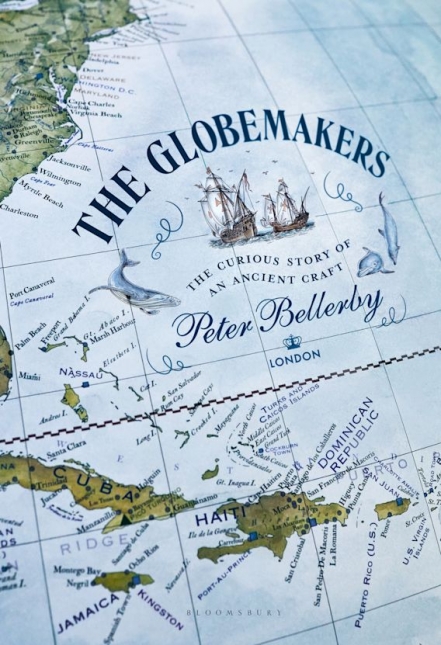The Globemakers: The Curious Story of an Ancient Craft
- By Peter Bellerby
- Bloomsbury Publishing
- 240 pp.
- Reviewed by Darrell Delamaide
- November 8, 2023
Rediscovering the art of depicting the world.

You don’t come across too many books like this one: beautiful color photos and illustrations throughout, an oversized 10-by-7-inch format, and a layout in double columns with boxes and pull quotes. Yet The Globemakers isn’t a textbook but an idiosyncratic account of how Peter Bellerby came to rediscover the craft of making globes and turned it into a profitable company.
It begins with the author’s desire to get a special present for his dad — “In early 2008 I decided I wanted to buy my father a globe for his upcoming eightieth birthday” — and ends more than 200 pages and a decade-and-a-half later with Bellerby confessing to a passion for his art:
“As we go carefully about our work, the fragility of the globes reminds me daily of the uniqueness of our own existence, the wonder and beauty of our planet, and the pressing need to protect it from further desolation.”
I have a globe produced by Replogle, which was established, I learned from Bellerby, in 1930 when Luther Replogle began handcrafting globes in Chicago. I first discovered my globe’s origin from the book’s description of a cartouche, which is the label south of Alaska detailing a globe’s maker. I wanted a globe after acquiring a number of atlases for my book The New Superregions of Europe, which chronicled the emergence of historic regions on that continent following integration (a process which, for better or worse, has since been reversed).
Maps are fascinating, but Bellerby’s love of globes is contagious. In the book, he recounts his painstaking rediscovery of a lost art in England as he went from a small studio to a cavernous space in north London that now employs 25 people and produces more than 600 globes a year. The reader learns about everything from the gores that are pasted onto the sphere to map the earth, to the metal casting and wood-turning required to make the stand that lets it spin. The saga continues with learning how to paint the globe and hand-letter place names.
Interspersed with Bellerby’s account of his progress are interesting factoids about the planet, the heavens, the need to update maps, the tilt of the earth, the role of the equator in both the earth and on globes, and many other tidbits.
The learning process for Bellerby seems extraordinarily time-consuming but actually was only a couple of years (his father got his gift, a little late, in 2010) and has been followed by a longer period of building the business (this, too, had to be figured out by the commercial novice). A short film on Vimeo and viral mentions on Instagram fueled demand and made Bellerby something of a celebrity. The company now offers personalization — like highlighting a buyer’s birthplace or adding illustrations of pets — as well as customized colors for the globes and finishes for their stands.
Business innovations aside, The Globemakers is ultimately about passion and how the true reward of work is found in the type of satisfaction Bellerby acknowledges at the end of his tale. Thanks to it, my globe will certainly accompany me on any future moves.
Darrell Delamaide is the author of four books, including The New Superregions of Europe, which features a map of the cross-border regions and 11 historical maps.

